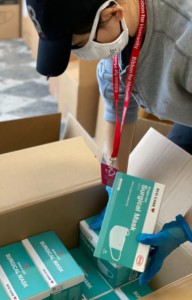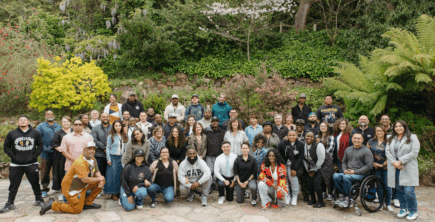
LGBT


When an authentic connection is made between the volunteer and the nonprofit that is when the magic happens – improved employee morale and real impact for the nonprofit. (Photo © Joel Muniz)
In my six years leading corporate volunteering programs for hundreds of employees, I have seen many of my past volunteers retain strong connections with their nonprofit partner—even years after the project—with a handful of them joining the nonprofit’s board or helping out with fundraising during the pandemic. Several studies (Clary et al., 1998, Musik and Wilson 2008) and anecdotal evidence collected by Tides suggest that social impact is one of the main reasons why employees participate in corporate volunteering programs. When an authentic connection is made between the volunteer and the nonprofit that is when the magic happens – improved employee morale and real impact for the nonprofit.
Companies understand that corporate volunteerism programs have multiple benefits, including increased recruitment, retention, and employee morale. According to the Macquarie Graduate School of Management, ninety-three percent of employees who volunteer through their company report being happy with their employer; seventy percent of employees think volunteer opportunities boost morale more than company mixers, based on a 2017 Deloitte Volunteerism Survey; and ninety percent of human resources professionals confirm that pro bono volunteering is an effective way to develop leadership skills, according to a study from the University of Georgia Terry College of Business.
So how do companies develop a successful corporate volunteering program? Authenticity. According to a 2015 Cone Global CSR survey, eighty-four percent of consumers confirm that they seek out products from responsible companies whenever possible. On the flip side, ninety percent of consumers would boycott a company if they learned of irresponsible or deceptive business practices. Similar to being truthful with consumers, it is important for companies to offer a genuine corporate volunteerism program for employees. When companies are singularly focused on their employees when designing their volunteer programs, they might miss the mark for fulfilling employees’ underlying motivation to participate in these programs—the desire to connect with the nonprofit sector and make a difference.

Volunteer programs coupled with financial support can help mitigate some of the challenges nonprofits are facing during these challenging times. (Photo © Alex Mecl)
The pandemic and the concurrent economic instability have left the nonprofit sector in a state of crisis. According to the Nonprofit Finance Fund survey, fifty-six percent of nonprofits are facing a shortage of staff. Over seventy percent of nonprofits have seen a significant reduction in the contributions they receive, based on a CAF America survey, and almost fifteen percent of organizations were forced to suspend their operations. Building Movement Project’s latest report states that “[n]ot surprisingly, [people of color]-led nonprofits, which tend to be smaller, less resourced, and community-based, face an even more challenging set of circumstances. Their very survival—and that of the communities who rely on them—is at stake.”
Volunteer programs coupled with financial support can help mitigate some of the challenges nonprofits are facing during these challenging times. But how do companies design an authentic corporate responsibility program that can fulfill their employees’ desire for social impact, while centering nonprofits’ needs during these challenging times? For authentic relationships in corporate social impact, we at Tides believe it is important to start with practices that move towards a trust-based and equal partnership that centers the leadership and expertise of the nonprofit.
Below are some of the principles we abide by at Tides when designing volunteer programs:

Trust the leadership of people with lived experiences in the communities they serve. (Photo © Joel Muniz)
The above examples demonstrate how nonprofit-centered corporate volunteering can be authentic, impactful, and collaborative to both employees and the nonprofits. Some questions to consider when you are designing or revamping your employee engagement programs include:
Share your thoughts and insights at [email protected], and join us at our first Impact Hour on May 6th,12PM PST, when we’ll answer these questions in more depth with our guest speaker, Admas Kanyagia, Head of Social Impact at GitHub.

LGBT

Corporate Partners

Philanthropy

Read the stories and hear the voices of social change leaders fighting for justice.